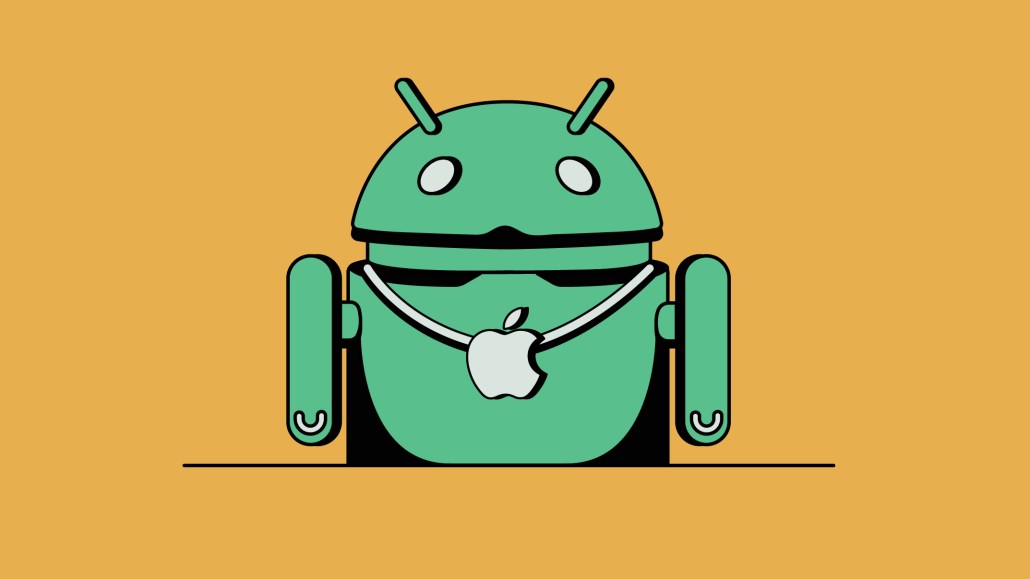How assumptions about Android and iOS audiences trigger missed marketing opportunities

Brand advertisers all too often view mobile as a monolithic structure, an environment in which platforms, channels and apps represent the variables in play. There is, however, another factor for which advertisers must account — operating systems.
iOS and Android are two overlapping but in many ways distinct channels, and within them there are opportunities to reach audiences in specific ways.
“The ad tech ecosystem and advertising, in general, was spoiled — it got too easy to get too distinctive in targeting strategies,” said Ben Holmes, general manager of DSP at Digital Turbine.
Fine-tuning and configuring campaigns to better match the nuances and audience opportunities of iOS versus Android unlocks a range of competitive advantages. Here, experts help unpack some of the ways iOS and Android overlap — all the while putting to rest the assumptions and myths about those audiences marketers tend to believe.
iOS and Android audiences are more similar than advertisers may realize
Before recent privacy features appeared in operating systems such as iOS 14.5 and iOS 15, the targeting available to marketers was working at pace. Opt-in rates were good, and there were plenty of ways for advertisers to reach their target audience, and marketers in the United States were perhaps leaning in Cupertino’s direction.
“In the U.S. market, iOS displayed a higher return on investment,” said Holmes. “Therefore, the attitude became that iOS users must be a more affluent audience, meaning they have more money to spend and are more willing to transact on a mobile device. That became the assumed understanding of the audience: ‘These are the higher income cohorts in America, and therefore you should invest more on iOS if you want a bigger bang for your buck,’ without any nuances tied to it.”
Beyond the privacy features that Apple then introduced that undermined that status quo, assumptions such as that have created other risks: Marketers stand to lose out on significant audiences if they neglect Android users in their targeting strategies.
“There are very expensive Android devices out there, some even more expensive than iPhones,” Holmes added. “In that tier-one category of Samsung Galaxys and even the new Google Pixel, they are not cheap devices, so it’s not logical. You can’t make these sweeping statements and then apply those to millions of users. They can’t be bucketed so easily. It’s always going to be more nuanced and more granular than you want it to be.”
Other demographics further alter marketers’ understanding of who’s on the two operating systems and what they represent.
Lens on demographics — minus assumptions
For the most part, the demographics between iOS and Android users in the U.S. are relatively the same — very nearly split between females and males. And the difference in users by age group is minimally different as well, with 58% of users ages 25–34 and 53% of 35–44 opting for iOS. Comparatively, 43% and 50%, respectively, choose Android, according to GWI. The one age group that demonstrates a more significant difference is the 18–24 group, with 28% using Android and 69% using iOS. As a takeaway, targeting between the two environments isn’t shaped by a vast age and gender gap.
In another characteristic that can be highlighted between systems and the people who use them, the actual model of a phone doesn’t necessarily dictate the return that the user represents.
“Someone that’s still rocking an iPhone 6S is going to be just about the same return as a lower-end Android device,” said Holmes. “When advertisers assume things on a large scale and see that iOS users spend more in the U.S., so, therefore, there’s a higher return on investment when advertising on those devices, therefore every iOS user must be affluent, it becomes a pervasive concept that just isn’t accurate.”
And, among the 18–24 group, only about one-third use an iPhone released within the past three years.
Given these factors, one key to making better-informed decisions about how to market to people across iOS and Android environments is to demand transparency from ad networks — i.e., which ads are being shown in which operating system and in what ways are they performing differently?
Volume matters, too. If a team targets mostly iOS users, then it may come as no surprise that the return is higher than for the small number of Android users targeted. Rather than dividing advertising by operating system without any nuance, advertisers can direct their ad network partners to target similar audiences on both iOS and
Android, with parameters around device age and user age instead. Measuring the results, they can adjust tactics accordingly.
Advertisers can also think outside of the box to reach users in spaces that many assume are unreachable. For example, one of the aspects of targeting is carrier plan type — prepaid versus postpaid — which can be a contextual parameter and tell marketers more about their audience. And while yet another assumption has been that prepaid Android users are unreachable, technology has unlocked approaches to those phones in 2021.
Across operating systems, the return of contextual is another unifying factor
Contextual targeting and contextual alignment were pushed to the wayside when all audiences were addressable, and targeting could be very distinctive, said Holmes at Digital Turbine. That’s changing.
“We went through a targeting phase where everything was audience targeting data, and now we’re in an addressability crisis,” said Holmes. “There will still be more changes, but at the end of the day, it’s going to continue to happen.
“The contextual strategies that some would consider antiquated are back in the forefront now,” Holmes continued. “With the new iOS privacy features, traffic took an initial hit, but as the strategies updated, traffic overall started to rebound, and things are now getting back to normal. Advertisers just have to target and plan in a different way.”
And while Android audiences can be targeted more specifically with the device ID in apps and cookies on the mobile web still in play, marketers that create strategies now that work for both the iOS regulations and the impending deprecation of the cookie and any potential restrictions on device IDs on Android will be better prepared for the future, no matter what new operating systems may present.
More from Digiday

In Graphic Detail: Why YouTube is a genuine threat to Netflix
Digiday has charted exactly how YouTube is a real threat to Netflix, due to its dominance of watch time, user base and its ability to totally reshape viewing behaviors.

At Ebiquity, a new role signals marketing’s shift from metrics to meaning
Marketing has no shortage of data. Ebiquity is betting on judgement.

Why brands are still showing up on Roblox
Over the past year, Roblox has become harder for brands to ignore — not because it has resolved the challenges of digital commerce, but because of the scale at which younger consumers already use it.





